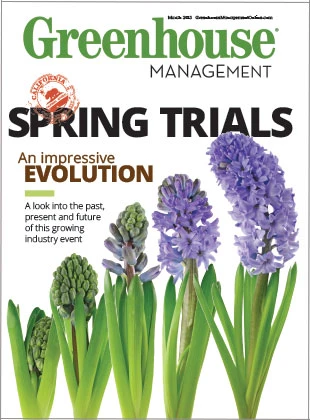 Bridget K. Behe Bridget K. Behe |
Spring training. It’s not just for baseball — it’s for our industry, too. Training is essential to success, especially when the spring rush for plant sales hits. Everyone is responsible for training, and everyone should be trained. Don’t delegate this to a few folks; everyone in the business has a skill to teach others. It may be as simple as how to answer the telephone or how to complete the sale on the POS system. Employees should take turns teaching their colleagues some aspect of their job to everyone else. Cross-training makes athletes stronger; why wouldn’t it help us?
Make standing — and paid — times of the week for training. Maybe it’s Wednesday morning before the retail store opens, or Tuesday afternoon after the break at the production greenhouse. Delegate schedule coordination and training module development to one person or a small team of people, but be sure to get everyone involved.
What was his remedy? He required his front-line employees to start with an open-ended welcoming question. His example was, “What brings you in today?” Then the employees had to follow the response with at least two qualifying questions: “How are you planning to use the product?” or “What has worked for you in the past?” We can adapt these two questions to horticulture. Peters also required employees to ask for the sale then see what additional products might complement the purchase. For the purchase of a petunia, for example, employees should say, “This seems like the right plant for you, so may I take this up front and hold it until your check-out?” Then they should recommend a fertilizer or trowel to the customer. This is a great thing to train your employees on during a regular training session.
What are the benefits of training? Safety training can reduce injuries and time lost on the job, and it can save the company financially on medical and worker’s compensation claims. Customer service training can improve the shopping experience and reduce complaints and returns. Maintenance training can extend the life of equipment. It doesn’t take long to see the benefits, both financial and emotional, that good employee training can provide. Now is the time to jump-start your training program to get ready for the spring push. The time invested now will return great dividends when crunch time hits.
Bridget Behe is a professor in the department of horticulture at Michigan State University. Have a Question? You can contact Bridget Behe at behe@msu.edu. |

Explore the March 2013 Issue
Check out more from this issue and find your next story to read.
Latest from Greenhouse Management
- The Growth Industry Episode 3: Across the Pond with Neville Stein
- A nation of gardeners: A history of the British horticulture industry
- How Izel Native Plants is solving the native plant conundrum
- Trends: Proven Winners 2025 perennial survey shows strong demand
- Online registration opens for 2025 Farwest Show
- Cashing in with customization
- The Ball Seed Difference
- Lawsuit challenges new H-2 visa rules






